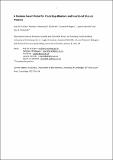Files in this item
A Random Forest model for predicting allosteric and functional sites on proteins
Item metadata
| dc.contributor.author | Chen, Ava S.-Y. | |
| dc.contributor.author | Westwood, Nicholas J. | |
| dc.contributor.author | Brear, Paul | |
| dc.contributor.author | Rogers, Graeme W. | |
| dc.contributor.author | Mavridis, Lazaros | |
| dc.contributor.author | Mitchell, John B. O. | |
| dc.date.accessioned | 2017-01-22T00:32:19Z | |
| dc.date.available | 2017-01-22T00:32:19Z | |
| dc.date.issued | 2016-04-05 | |
| dc.identifier | 240276568 | |
| dc.identifier | e38248dd-151c-4f26-930e-92c3359aa7e1 | |
| dc.identifier | 84958074327 | |
| dc.identifier | 000374002000005 | |
| dc.identifier.citation | Chen , A S-Y , Westwood , N J , Brear , P , Rogers , G W , Mavridis , L & Mitchell , J B O 2016 , ' A Random Forest model for predicting allosteric and functional sites on proteins ' , Molecular Informatics , vol. 35 , no. 3-4 , pp. 125-135 . https://doi.org/10.1002/minf.201500108 | en |
| dc.identifier.issn | 1868-1743 | |
| dc.identifier.other | ORCID: /0000-0003-0630-0138/work/56424211 | |
| dc.identifier.other | ORCID: /0000-0002-0379-6097/work/34033379 | |
| dc.identifier.uri | https://hdl.handle.net/10023/10146 | |
| dc.description | We thank the Scottish Universities Life Sciences Alliance (SULSA) for funding to JBOM and for PB’s PhD studentship under NJW’s supervision. | en |
| dc.description.abstract | We created a computational method to identify allosteric sites using a machine learning method trained and tested on protein structures containing bound ligand molecules. The Random Forest machine learning approach was adopted to build our three-way predictive model. Based on descriptors collated for each ligand and binding site, the classification model allows us to assign protein cavities as allosteric, regular or orthosteric, and hence to identify allosteric sites. 43 structural descriptors per complex were derived and were used to characterize individual protein-ligand binding sites belonging to the three classes, allosteric, regular and orthosteric. We carried out a separate validation on a further unseen set of protein structures containing the ligand 2-(N-cyclohexylamino) ethane sulfonic acid (CHES). | |
| dc.format.extent | 11 | |
| dc.format.extent | 561918 | |
| dc.language.iso | eng | |
| dc.relation.ispartof | Molecular Informatics | en |
| dc.subject | Random Forest | en |
| dc.subject | Machine learning | en |
| dc.subject | Cheminformatics | en |
| dc.subject | Drug Design | en |
| dc.subject | Allosteric site | en |
| dc.subject | QD Chemistry | en |
| dc.subject | QH301 Biology | en |
| dc.subject | NDAS | en |
| dc.subject.lcc | QD | en |
| dc.subject.lcc | QH301 | en |
| dc.title | A Random Forest model for predicting allosteric and functional sites on proteins | en |
| dc.type | Journal article | en |
| dc.contributor.institution | University of St Andrews. School of Chemistry | en |
| dc.contributor.institution | University of St Andrews. EaSTCHEM | en |
| dc.contributor.institution | University of St Andrews. Biomedical Sciences Research Complex | en |
| dc.contributor.institution | University of St Andrews. School of Biology | en |
| dc.identifier.doi | 10.1002/minf.201500108 | |
| dc.description.status | Peer reviewed | en |
| dc.date.embargoedUntil | 2017-01-21 |
This item appears in the following Collection(s)
Items in the St Andrews Research Repository are protected by copyright, with all rights reserved, unless otherwise indicated.

